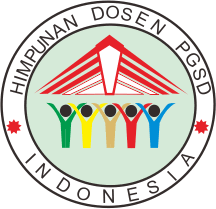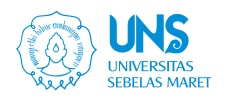Implementasi Studi Numerasi pada Pembelajaran Matematika pada Kelas V di SDN Dukuhan Kerten Surakarta Tahun Pelajaran 2023/2024
Abstract
Keywords
References
Akmalia, N. Analisis Kemampuan Literasi Numerasi Siswa SMP/MTs Kelas VIII di Kelurahan Belendung (Bachelor's thesis, Jakarta: FITK UIN Syarif Hidayatullah Jakarta). Allen, C. E., Froustet, M. E., Leblanc, J. F., Payne, J. N., Priest, A., Reed, J. F., ... & Payne, J. N. (2020). Executive Summary (Principles And Standards For School Mathematics). The Arithmetic Teacher, 29(5), 59. Australian Curriculum, Assessment and Reporting Authority (ACARA). (2010). The Australian curriculum: Mathematics. Sydney: ACARA. Baroody, A. J. (2003). The development of young children's mathematical thinking. Mahwah, NJ: Erlbaum. Clements, D. H., & Sarama, J. (2004). Learning and teaching early math: The learning trajectories approach. New York: RoutledgeFalmer. Freire, P. (1970). Pedagogy of the oppressed. New York: Continuum. Kolb, D. A. (1984). Experiential learning: Experience as the source of learning and development. Englewood Cliffs, NJ: Prentice-Hall. Merriam, S. B. (2009). Qualitative research: A guide to design and implementation. San Francisco: Jossey-Bass. National Council of Teachers of Mathematics (NCTM). (2000). Principles and standards for school mathematics. Reston, VA: NCTM. Ningsih, S. (2014). Realistic mathematics education: model alternatif pembelajaran matematika sekolah. Jurnal Pendidikan Matematika, 1(2), 73-94. Oxford Languages. (n.d.). Study. Retrieved from [https://languages.oup.com/google-dictionary-en/](https://languages.oup.com/google-d ictionary-en/) Piaget, J. (1967). The child's conception of numbers. New York: Norton. Principles, N. (2000). Standards for school mathematics Reston, VA Natl. Counc. Teach. Math. Radiusman, R. (2020). Studi Literasi: Pemahaman Konsep Siswa Pada Pembelajaran Matematika. Fibonacci: Jurnal Pendidikan Matematika dan Matematika. 6 (1), pp: 1-8 Suci, D. W., & Taufina, T. (2020). Peningkatan Pembelajaran Matematika Melalui Strategi Berbasis Masalah di Sekolah Dasar. Jurnal basicedu, 4(2), 505-512.
Refbacks
- There are currently no refbacks.



